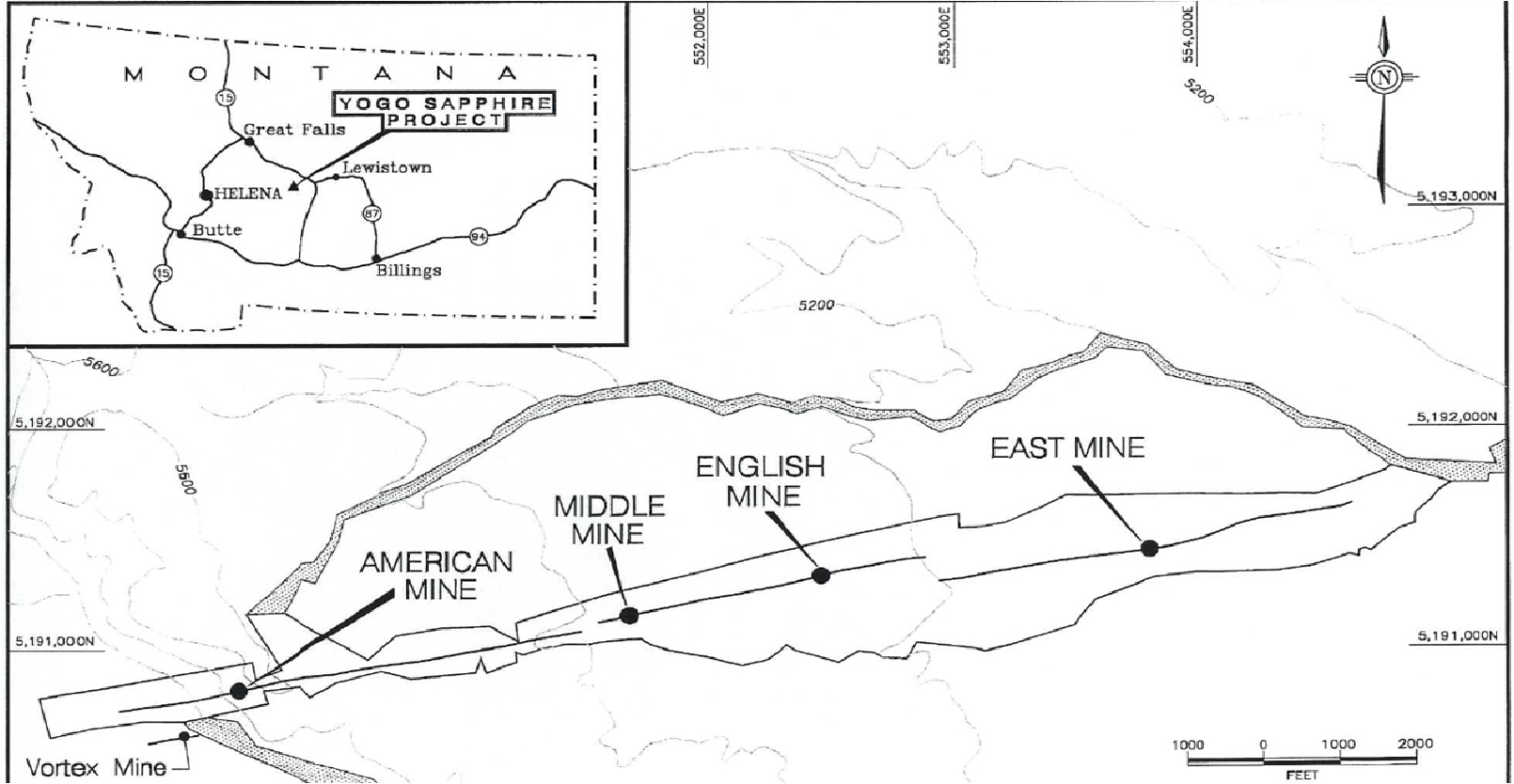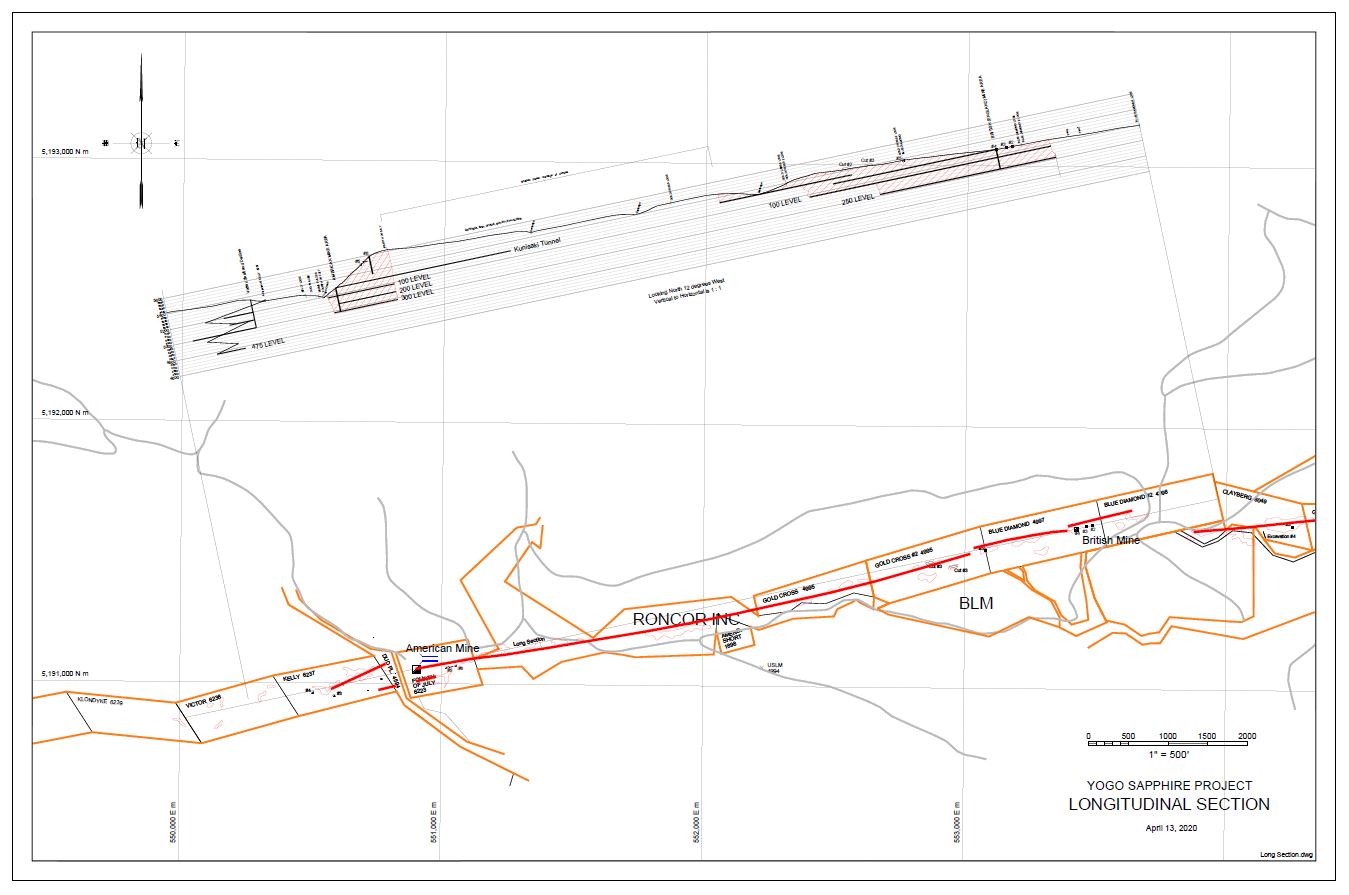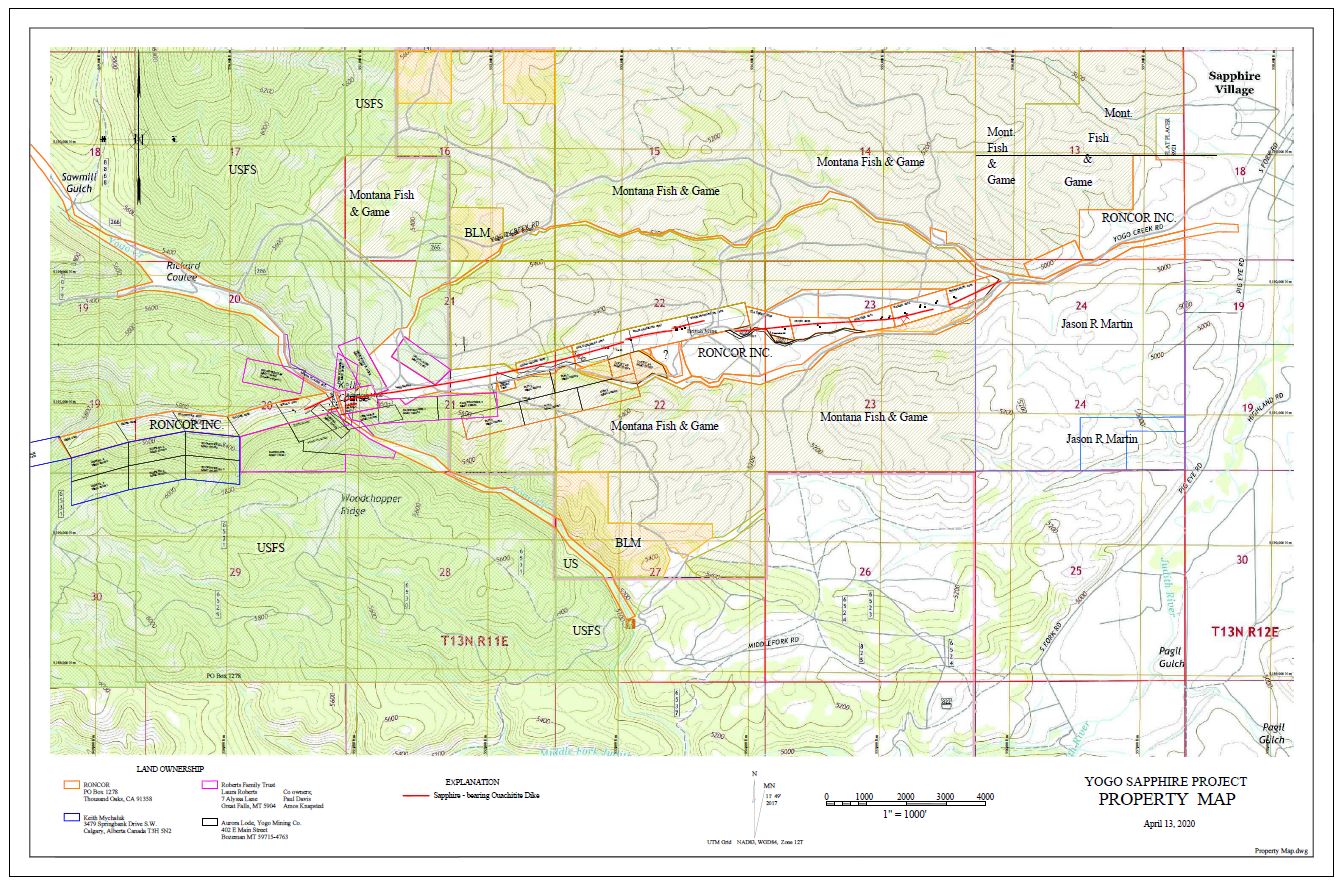The YOGO™ Sapphire Mine
During a gold rush in 1878, about a thousand miners came to Yogo Creek, which was one of the gold-bearing streams in Montana not yet actively mined. Prospectors noticed "Blue pebbles" in their sluice boxes along with small quantities of gold. The mining camp at Yogo City only flourished for roughly three years and eventually the population dwindled to only a few individuals.
In 1894, the "blue pebbles" were recognized as sapphires. One story credits a local school teacher for recognizing the blue pebbles as sapphires. A variation is that the teacher lived in Maine, but was a friend of a local miner, who had mailed her a small box with some gold and a few "blue pebbles" in it. Another story credits a miner named S.S. Hobson for surmising that the blue stones might be sapphires and his guess was confirmed by a jeweler in Helena. Ultimately, in 1895, Jake Hoover sent a cigar box containing the sapphires he had collected while mining gold to an assay office, which in turn sent them via regular, uninsured mail to Tiffany's in New York City for appraisal by Dr. George Kunz, the leading American gemologist of the time. Impressed by their quality and color, Kunz pronounced them "the finest precious gemstones ever found in the United States". Tiffany's sent Hoover a check for $3,750 (approximately $115,200 as of 2020), along with a letter that described the blue pebbles as "sapphires of unusual high quality".
Yogo sapphires were ultimately traced from the alluvium to a large vertical dike which determined to be the source. In February 1896, a sheepherder named Jim Ettien found the sapphire mother lode: the Yogo dike. Ettien was prospecting for gold, and found sapphires after washing gravel he found in a fissure within a limestone outcrop. Ettien staked two mining claims. The vein turned out to be 5 miles (8 km) long and several other miners promptly staked claims along the dike. Ettien sold his two claims to Jake Hoover and Hoover in turn sold his interest in eight original mining claims, known as the "New Mine Sapphire Syndicate", to his two partners for $5,000 (approximately $150,000 as of 2020). This site was 5 miles (8 km) from Yogo City. In 1899, Johnson, Walker and Tolhurst, Ltd. of London purchased the New Mine Sapphire Syndicate for $100,000 (approximately $3.1 million in 2020 dollars). At that point, the operation became unofficially known as the "English Mine“.
On July 4, 1896, two other Americans, John Burke and Pat Sweeney, located six mining claims on the western portion of the Yogo dike near Yogo Creek. This was an area that Hoover had deemed to be unfit for mining. These claims were collectively known as the "Fourth of July Claims" and became known as the "American Mine". In 1904, the mine was bought by the American Gem Syndicate and it was re-sold in 1907 to the American Sapphire Company.
One of the Englishmen who came to the area was Charles Gadsden of Berkhamsted, Hertfordshire. By 1902, Gadsden was promoted to resident supervisor of the English Mine and he quickly turned its focus from gold to sapphires. Gadsden's security measures were very tight, as weight-for-weight, rough sapphires were and continue to be worth much more than gold. The English Mine flourished until the 1920s, but floods on July 26, 1923, so severely damaged the mines that they never fully recovered. Between the aftermath of flooding and hard economic times, the English Mine ceased to operate in 1929. It had recovered more than 16 million carats (3.2 tons) of rough sapphires that produced 2.5 million carats (500 kg) of finished gems valued at $25 million in 1929 dollars (approximately $470.0 million in 2020 dollars). A series of other firms mined sapphires there, but with marginal success. For much of the 1930s and 1940s Gadsden worked the mine alone and used his own money to pay its property taxes. He remained caretaker of the mines until shortly before his death on March 11, 1954.




